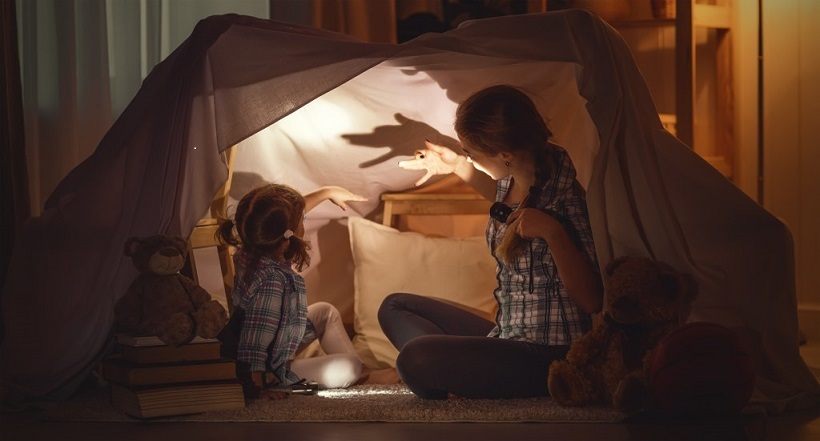Discussing Face-To-Face Communication In The Virtual Classroom
Through examining research that highlights the special nature and importance of face-to-face communication, I make recommendations on how to achieve something similar in the live online learning environment, and ways that technology can mitigate the risk of not achieving this.
Do Our Brains Struggle Without Faces To Watch?
In this Forbes article, Carol Kinsey Goman shares this insight:
"…According to Dr. Thomas Lewis (an expert on the psychobiology of emotions and assistant clinical professor of psychiatry at the University of California San Francisco), when we are denied [these] interpersonal cues, the brain struggles and real communication suffers."
I haven’t been able to find anything else on the internet from Dr. Thomas to directly reference this or read more from him, so take the quote with a pinch of research salt. Assuming that the context is reliable, what we need to do when communicating live online or asynchronously, such as through forums, is to be able to address those struggles. We need to be able to represent those “interpersonal cues” in different ways so that our communication doesn’t suffer as much as it could.
Expressions In Communication
Further to this, in The Human Face, by Brian Bates with John Cleese, they focus on expression as part of how we build relationships and deliver messages:
"We need to be more clear about what we are losing. Expressions are a potent part of our connection with one another. What are the consequences of communicating without them?"
What do you think these consequences are? For general communication, it’s about what messages get lost, either the entire point or some of the nuances that go along with the key point. By removing some of the expressions, facial and body, as well as the interpersonal cues that Dr. Thomas mentions, it impacts on the potential to make and build relationships over distance.
From a learning or training standpoint, there are concerns about not only delivering the message well enough when live online, but also the intercommunication to check on the learning and understand the questions and comments from attendees in virtual sessions.
Scanning Face-To-Face Communication
What else are we missing out on in the live online classroom? A pertinent study about Neural Synchronization during Face-to-Face Communication was published in the Journal of Neuroscience. The results of the experiments:
"Showed a significant increase in the neural synchronization in the left inferior frontal cortex during a face-to-face dialog between partners."
In a critical review of the paper, Kyongsik Yun explained that:
"The left hemisphere is dominant for language function and that the left inferior frontal cortex and inferior parietal cortex have been known to be closely related to action understanding and imitation, i.e., mirror neuron system… The inferior frontal cortex has been particularly associated with empathy and social cognition."
By being able to scan the brain whilst people took part in various communication activities in pairs, the experimenters, Jing Jiang et al, were able to see that when the people spoke together face to face, there was a change in cerebral blood flow to these parts of the brain.
The critical review further explains that the “quality of communication in each condition was assessed by self-report, and face-to-face dialog represented a higher quality of communication”.
Jing Jiang et al state that:
"These results suggest that face-to-face communication, particularly dialog, has special neural features that other types of communication do not have and that the neural synchronization between partners may underlie successful face-to-face communication."
Face-to-face communication was not only found to be better by participants themselves when they self-reported, but also by independent scanning of specific brain regions.
What was it that made such an improvement over the other experimented states (of sitting back to back when speaking, of monologues and more)?
Kyongsik states that this improvement:
"Could result from either a higher quality of communication or from the face-to-face setting, in which various nonverbal cues were present."
Gestures And Turn Taking For Communication Improvement
To address this challenge Kyongsik explains of the original experiment that:
"Jiang et al. (2012) performed an additional analysis wherein they separated time points showing the nonverbal communication between participants, such as turn-taking behavior and body language.
Time points in which facial expression and gestures occurred showed significant neural synchronization compared with other time points in the face-to-face dialog condition only.
The results suggest that the increased interbrain correlation mainly reflected nonverbal interaction."
This suggests that it’s not just the words and how you say them, but all of the other gestures and elements that make up our body language that improved the communication and relationship between two people.
Research Relevance And Limitations
This is one scientific piece of research about connection, relationship building, and communication. Kyongsik explains the importance of this work:
"The study suggests that face-to-face communication has important neural and behavioral features that other types of communication cannot rival, and the interbrain correlation results may have implications for understanding the neural mechanisms of social interaction."
He also highlights what we must always remember about a single piece of research:
"Face-to-face communication offers a superior form of communication in the context of this study."
What this study doesn’t focus on, obviously, is comparing this to communication over the phone or where video is present, such as a Facetime or Skype call. Similar experiments whilst using technology would give insight to any or what differences there are, both in brain scanning and self-reporting.
For now, what we know is that the strength of a face-to-face conversation is in both individuals feeling that the communication was better, and in the connections with others due to our neurons synchronising.
Detail For Virtual Classroom Design And Facilitation
Something to take specifically into account in this research is that Jiang Jang et al state:
"Another major difference is that face-to-face communication involves more continuous turn-taking behaviors between partners, a feature that has been shown to play a pivotal role in social interactions."
Being able to see someone’s face and gestures, along with this significant element of interaction behaviour is important to take note. I’m very aware in some of my virtual classroom sessions that I’m doing a lot, if not most, of the talking. Whilst some of this is reading out what people have typed into the text chat area, it’s still me voicing it.
Text Chat As Dialogue?
When I read something from the chat window, make a comment or ask a question and that person quickly types a response, is that a form of turn-taking that would have a correlation in brain activity as was measured in this experiment?
In terms of self-assessment of the quality of communication, positive feedback from attendees in virtual classroom sessions I deliver, regarding the amount and quality of the interaction during a session, could be included.
Conversation Live Online
What we can also take from this point in the research is the importance of verbal dialogue and discussion within a virtual classroom session. This means that designing activities and time for discussion is imperative for people to make connections with each other. I argue that this is likely then to increase understanding, remembering, recalling and using the information and skills focused on in the virtual session.
This discussion is important to have verbally, across telephone/microphone between an attendee and the facilitator – not just the question/answer model but a truer interaction with turn taking discussion. Doing this multiple times across all of the attendees will be important for building those relationships and breaking down the technical and distance barriers that are present.
Breakout Activities
Another way to use this research information is to build in the time and activities for attendees to discuss with each other, using the social interaction norms such as turn taking, to deal with the challenges of the topic they are learning. Breakout rooms are ideal for this because they allow for private verbal dialogue between two or more participants. Usually, software also allows for webcam too, which potentially can increase the connection, as shown by this research.
Digital Body Language In The Virtual Classroom
Jeffrey Ventrella wrote a book on Virtual Body Language focused on live online learning, which is a nice summary:
"In a virtual classroom… For education to be effective, we have to capture that nuanced and magical spark from the wise men and women who are skilled at dialog and debate, fuelling a sense of wonder and confidence, and showing students how to communicate with their whole bodies...Virtual body language will become a key factor in the future of global business."
Virtual body language will become a key factor in the future of global business.









